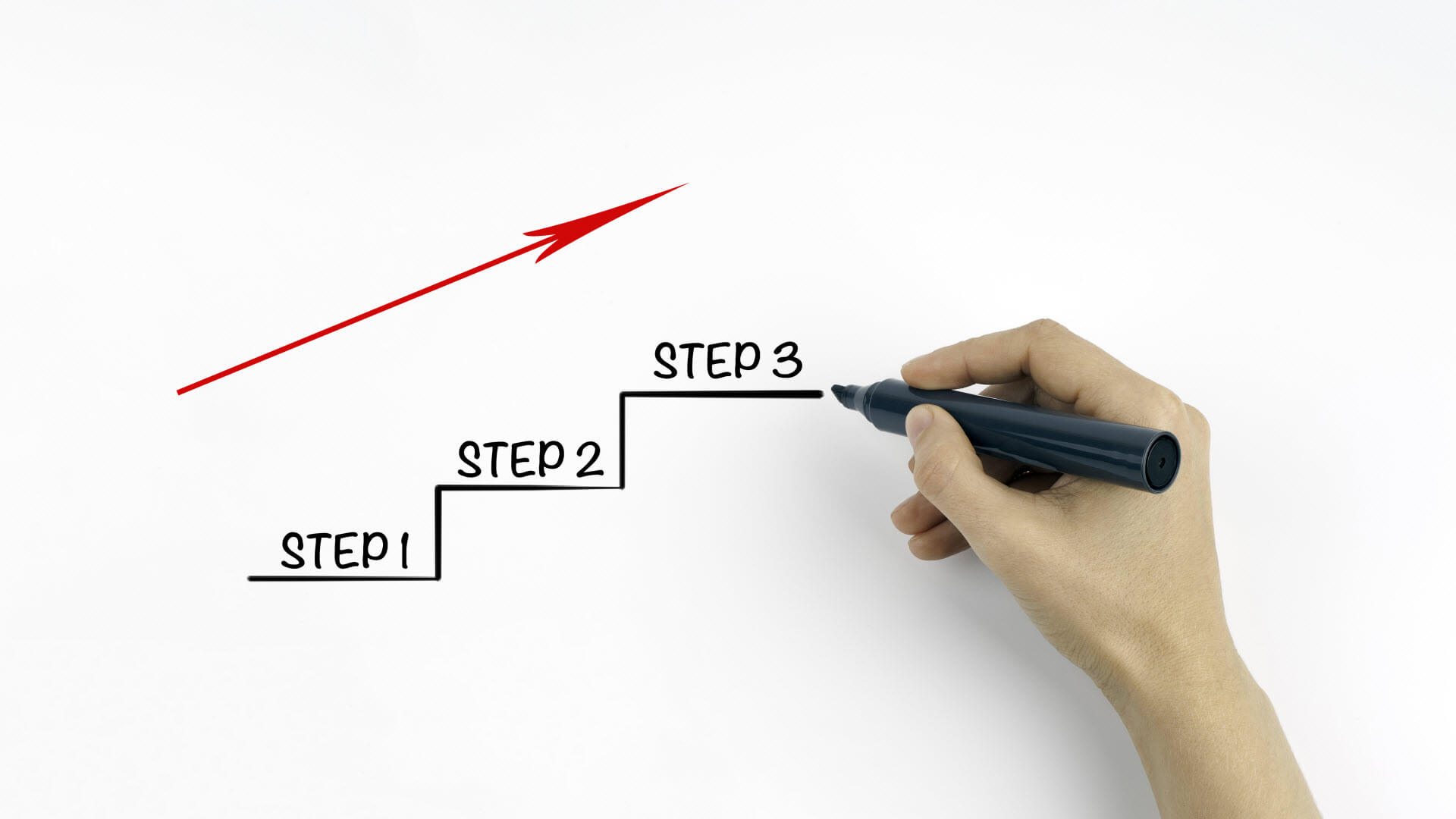The Chief Sales Leader Road Map™
Step-by-step instructions for managing sales strategy, sales execution, and sales evaluation procedures
Steps For Deploying The Chief Sales Leader Framework™
The Chief Sales Leader Road Map™ was created in response to questions from business leaders about which operating process to focus on first. Understanding the twelve operating processes that must be built and managed for a sales team to operate with precision is one thing. Knowing the right sequence to work on them to quickly generate revenue at a low cost is another.

There are three options that are based on your time urgency, company culture, and cost requirements:
- Methodical Approach – – to keep time, cost and risk low by working on one of the twelve (12) operating sales processes at a time
- Expedited Approach – – to speed implementation by simultaneously working on three (3) of the operating sales processes at once
- Custom Approach – – to meet your unique situation
Steps For Working On The Chief Sales Leader Framework™

Step 1 – We Always Start At The Sales Call and Work Backwards, because:
- That is where the buyer resides and we can learn about our messaging
- The cash register rings – – to generate short-term revenue
- Time-saving lessons are learned
for improving the (3) strategic and twelve (12) operating processes that are required for a sales team to execute with precision – – effectively, efficiently and predictably
Step 2 – Understand The Buyer Decision Process
- What answers do buyers need in order to make a purchase?
- What questions do buyers not know to ask about your offering?
- What is the right sequence of questions and answers to engage?
- What are you asking them to start and stop doing?
- What are the ten reasons why they will so “no” to purchase?


Step 3 – Craft Value Prop & Sales Call Guide
- Open the sales conversation
- Investigate buyer needs and qualify them
- Demonstration your solution
- Present pricing options
- Negotiate and close the deal
- Handle objections at any point during the conversation
Step 4 – Sales Appointment Scheduling Approach
- Define target industries, companies and buy points
- Find contact information i.e. email and phone
- Craft message to get buyers to say “yes” to an
appointment - Request appointments via email and phone
- Deploy marketing automation to sustain contact
- Track appointment setting results i.e. email and phone

After you reach the point that sales call are being executed with precision – – effectively, efficiently, and predictably – – it’s time to install the three (3) strategic and twelve (12) operating processes that are required to build sustainable revenue growth year-after-year.

Step 5 – Build-out Sales Process Infrastructure To Enable Sales To Executed With Precision From Sales Call-to-Call and Sales Person-to-Person
Option 1 – Methodical Road Map – – work on one process at a time in each of the three (3) strategic processes – – sales strategy, sales execution, and sales evaluation
Option 2 – Expedited Road Map – work in a sequential fashion through each of the three (3) strategic and (12) operating processes that sales teams are required to execute
Option 3 – Custom Road Map – – work on the three (3) strategic and twelve (12) processes in a manner that fits your goals, culture, timing, and budget
Option 1 – Methodical Road Map
We work on one operating process at a time alternating between the three (3) strategic processes

- Sales Measurement (sales evaluation) for tracking sales activities, sales opportunities, and contact history
- Sales Forecasting (sales strategy) for revenue, sales pipeline activities, sales productivity, staffing requirements and selling expenses
- Sales People (sales execution) for hiring, onboarding, coaching, compensating, rewarding, evaluating, training, developing future sales leaders, and succession planning
- Sales Procedures (sales execution) for lead generation, appointment setting, new customer acquisition, customer onboarding, customer service, account management renewals, cross-selling, and win-backs
- Sales Technology (sales execution) including CRM, marketing automation, customer service, phone, auto-dialer, sales library, productivity, project management, territory mapping and routing, and human resources
- Sales Content (sales execution) for awareness building, purchase evaluation, company information, product and service information, pricing and proposals, promotional materials, contacts and customer service help desk
- Sales Analysis (sales evaluation) for internal activities, results, and trends; as well as external events and trends
- Sales reporting for industries, buyer companies, sales activities, revenue, sales regions, and salespeople
- Sales Process Improvement (sales evaluation) for gap analysis, problem identification and prioritization, improvement planning, and improvement reporting
- Sales and market planning by industry, geography, buy-point, product, and service, buy point, etc.
- Sales organization design to get the right salespeople to the right place at the right time
- Sales culture to ensure that sales call execution is being reinforced
Option 2 – Expedited Road Map
We will simultaneously work on one operating process within each of the three (3) strategic processes
Sales Strategy
- Sales forecasting for revenue, sales pipeline activities, sales productivity, staffing requirements and selling expenses
- Sales and market planning by industry, geography, buy-point, product, and service, buy point, etc.
- Sales organization design to get the right salespeople to the right place at the right time
- Sales culture to ensure that sales call execution is being reinforced
Sales Execution
- Sales procedures for lead generation, appointment setting, new customer acquisition, customer onboarding, customer service, account management renewals, cross-selling, and win-backs
- Sales technology including CRM, marketing automation, customer service, phone, auto-dialer, sales library, productivity, project management, territory mapping and routing, and human resources
- Sales content for awareness building, purchase evaluation, company information, product and service information, pricing and proposals, promotional materials, contacts and customer service help desk
- Sales people for hiring, onboarding, coaching, compensating, rewarding, evaluating, training, developing future sales leaders, and succession planning
Sales Evaluation
- Sales measurement for tracking sales activities, sales opportunities, and contact history
- Sales analysis for internal activities, results, and trends; as well as external events and trends
- Sales reporting for industries, buyer companies, sales activities, revenue, sales regions, and salespeople
- Sales process improvement for gap analysis, problem identification and prioritization, improvement planning, and improvement reporting
